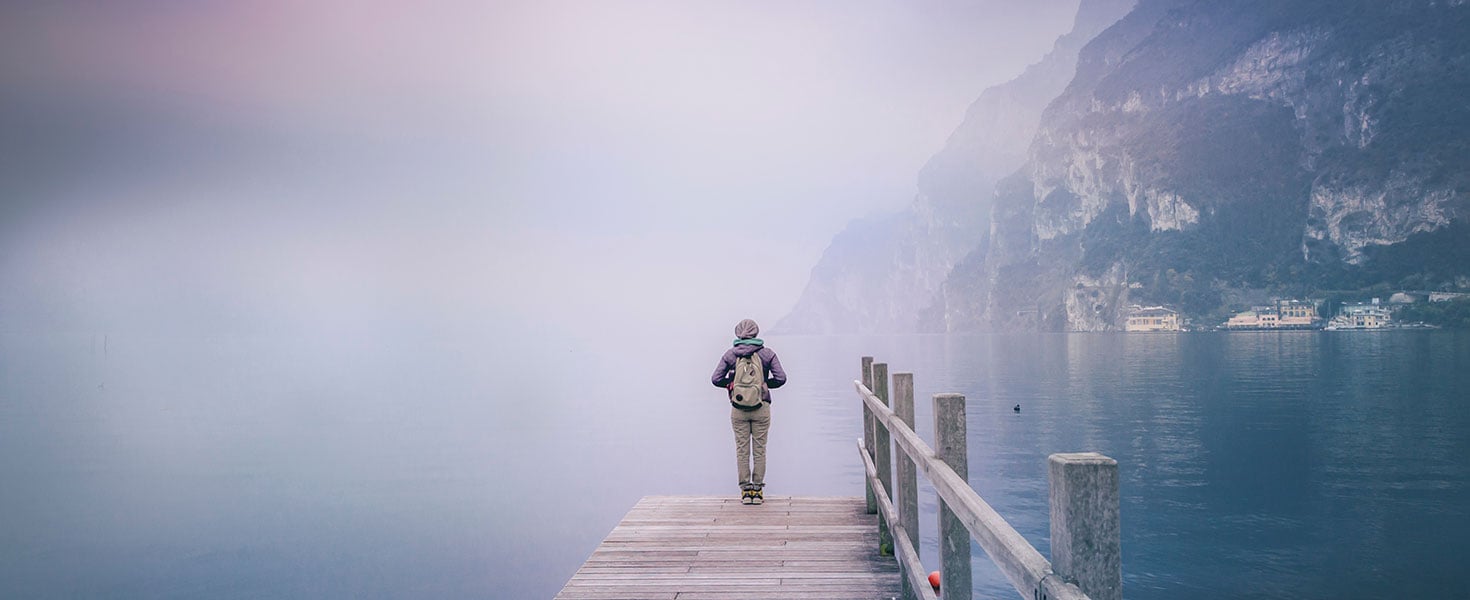
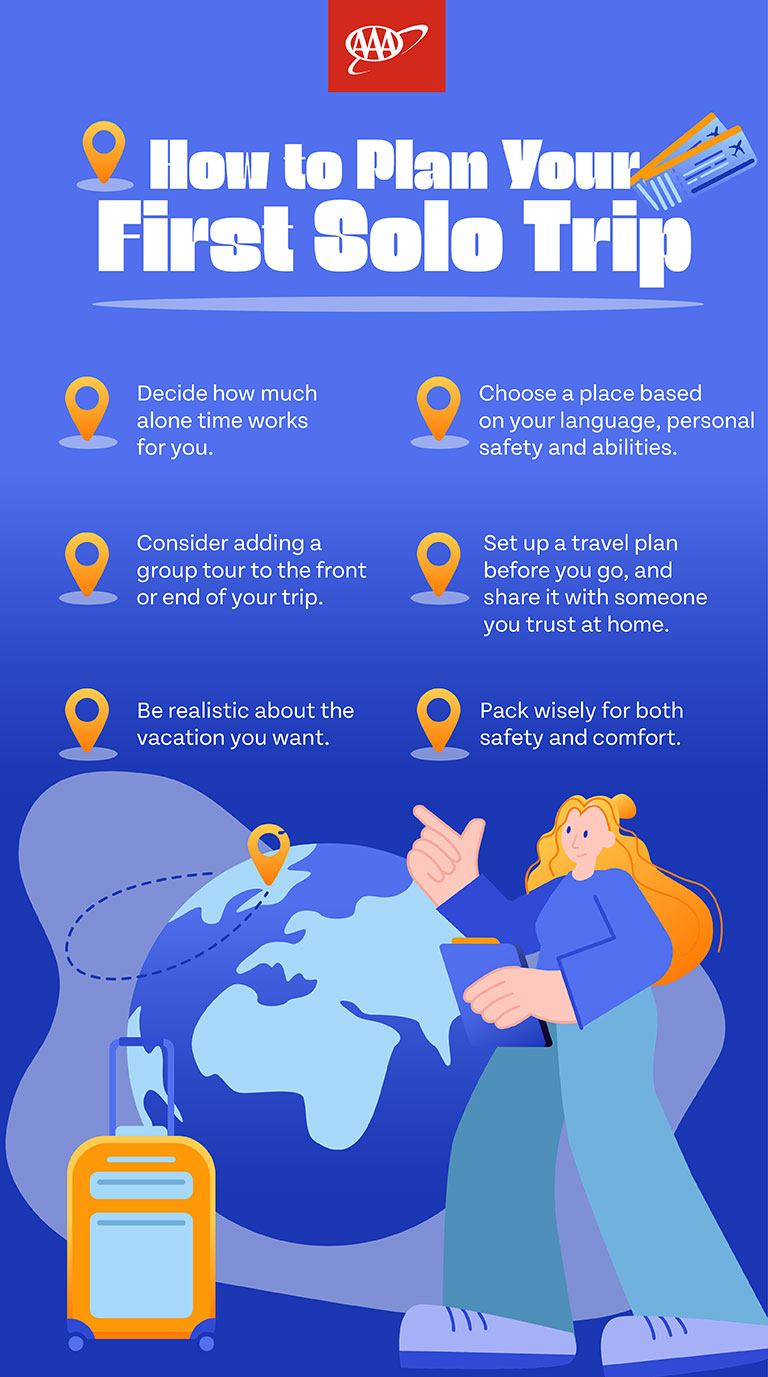
Solo travel is soaring, especially among women, with the main motivation of traveling solo being the feeling of freedom and flexibility of traveling alone, according to a 2023 Statista global survey. But how do you know if solo travel is right for you? To plan a getaway that works with your comfort level, budget, interests and abilities, consider the following key points.

1. Decide how much alone time works for you.
Knowing how much alone time works for you can help you carve out the ideal trip plan. Like only a long weekend alone? Aim for a trip of that length, or add a group tour to the front or back end of your solo trip. Spend some time by yourself exploring a destination, and then work in a visit with family or friends to strike a good balance between being solo and social. Feeling lonely or not getting enough time by yourself can dampen your spirits, so consider your comfort level between alone time and me time.
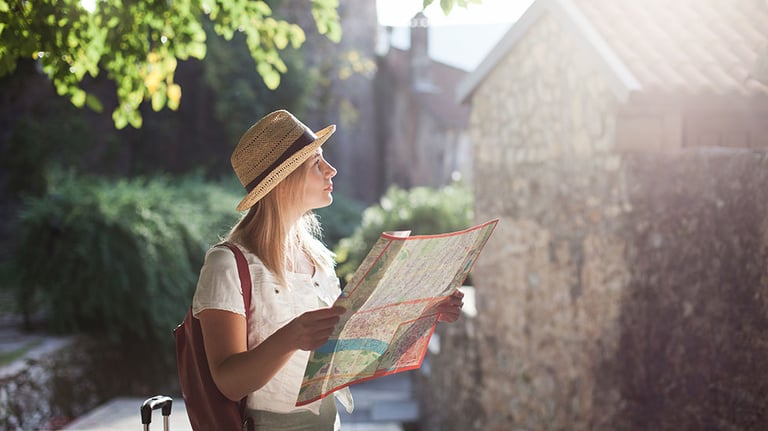
2. Be realistic about what kind of vacation you want.
Are you looking to kick back on a beach vacation, jet off to explore an exciting city, or venture on an active, outdoorsy pursuit? Prioritize the kind of getaway that makes your heart sing, which will help you narrow down the list of places to visit.
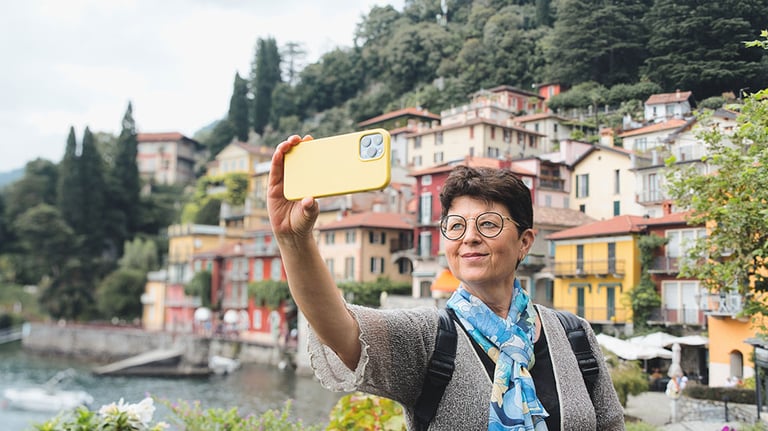
3. Select a solo-travel-friendly destination.
Some destinations work better for solo travelers than others, of course. You may want to start by picking a place where your native language is spoken. That could mean staying stateside for your first foray into solo travel. After all, there’s also no need to travel halfway around the world. Heading out to a cool destination a state or two over from yours or even a neighboring town could provide the reassurance you need knowing that you’re close enough to get home quickly should you choose to do so.
Also critically important, factor in the safety of the destination, especially if you’re traveling abroad where customs—particularly for female solo travelers—may differ widely from those at home in the States. Also check the US Department of State’s website for travel advisories when planning a trip abroad.
Whether traveling near or far, ensure that you’re able to physically handle the terrain of the destination and the activities you want to pursue, and ensure that you’ll be able to get around your destination, whether navigating on foot, by car, by public transportation or another mode of travel.

4. Set up a travel plan before you go, and share it with someone you trust at home.
You don’t have to open a spreadsheet and have every minute of every day planned out (unless that’s the way you like to travel). But setting up at least a skeleton plan helps to give your trip direction, eliminating huge chunks of time that can feel intimidating to fill.
Before you go, share the plan with someone you trust so that they know your location for your personal safety. Should an emergency arise while on your trip or back at home, your trusted family member or friend will know where you are and how to contact you.
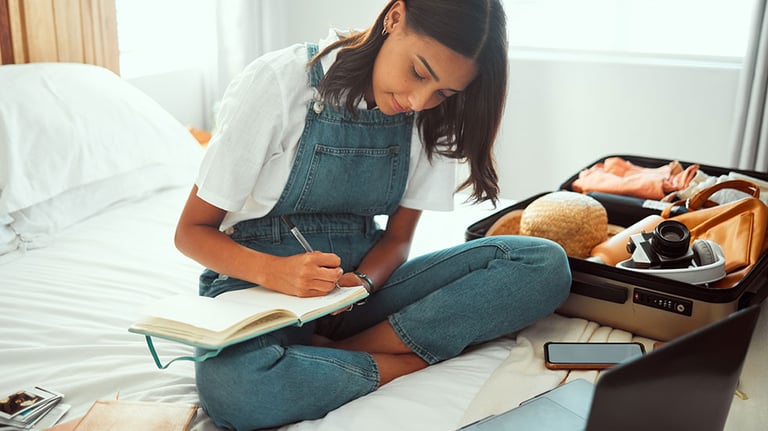
5. Pack wisely for both safety and comfort.
Take only as much luggage as you can comfortably carry by yourself. You’re much more vulnerable in public spaces if you constantly require help or can’t keep hold of all of your bags. Traveling light will also enhance your personal comfort, helping you move about more freely and with less stress.
Also, plan to arrive at your destination during the day if possible, or if a daytime arrival isn’t an option, have a plan for safe nighttime transport once you arrive. Emergencies can and do happen, so consider purchasing travel insurance before your trip so that you’re covered.
Have copies of your important documents, such as your passport, driver’s license, and travel itinerary, too. Should any documents get damaged, lost or stolen, you’ll have an easier time getting help replacing a document if you already have a copy. (Once at your destination, leave your lodging with only those things you really need for the day, and keep the rest locked up in a secure place, like an in-room safe. If possible, stow your money and credit cards in different places so that if one is lost or stolen, you don’t lose everything.)
If you—like a fast-growing number of travelers—are looking for the freedom and flexibility of solo travel, you can safely venture out with the confidence and peace of mind that comes with smart planning based on who you are, where you’d like to go, and what makes traveling special to you.
